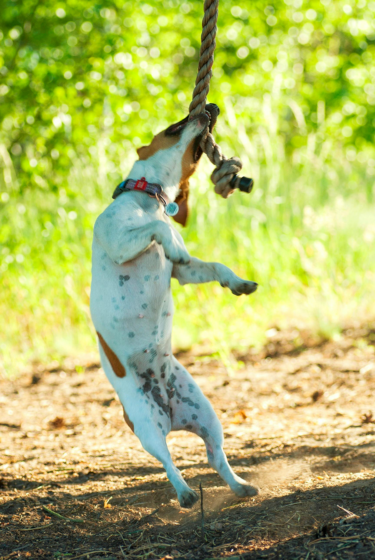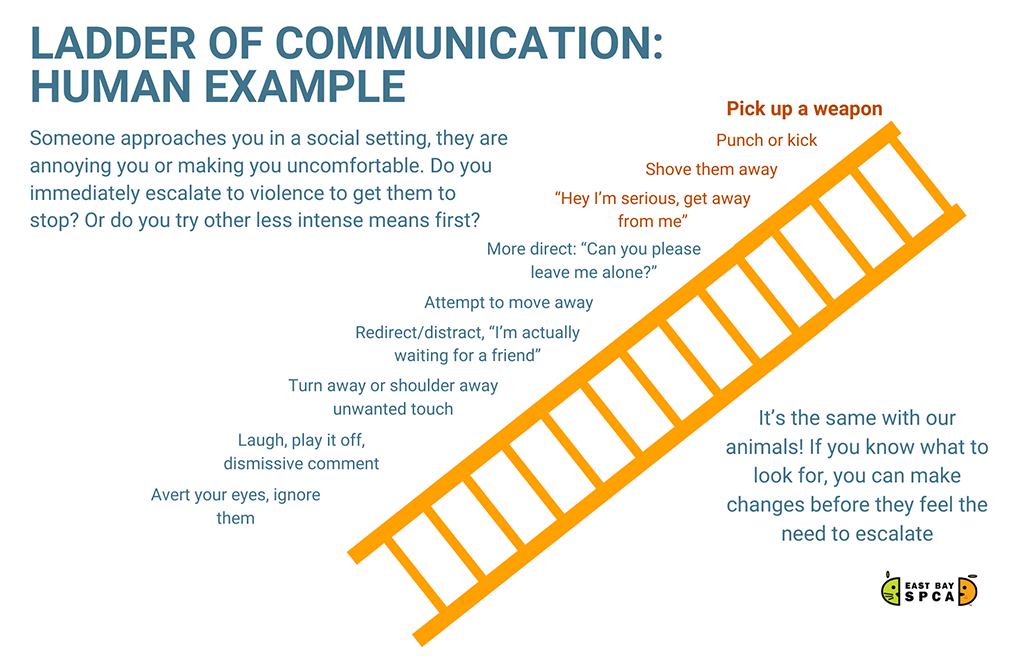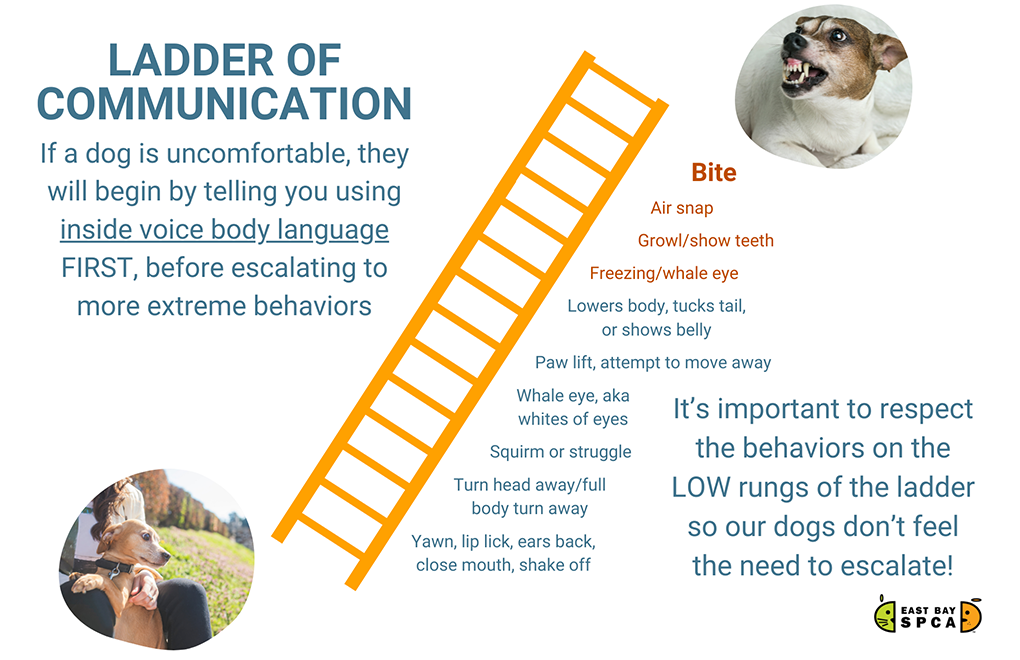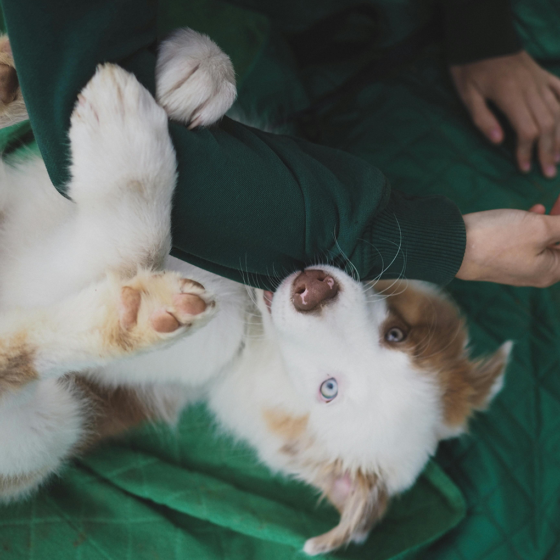Checkmate the Chomp: Using the Ladder of Communication
Our team of dog behavior professionals often work with cases that involve a bite history. Dogs bite for many different reasons, and a bite history isn’t necessarily an indication of aggression. We wanted to share an overview of how our team approaches dog bite prevention and lift the veil a bit on why dogs bite and what they are trying to communicate when they do.
Why do bites commonly occur?

There are several common reasons that we tend to see dogs choosing to escalate to a bite:
•Pain/discomfort or anticipation of pain/discomfort
•Inability to escape/get away
•No other way to stop an unwanted interaction
•To protect a desired resource
•History of achieving a desired outcome
Dog bites are often scary! Even if the bite itself isn’t medically serious, they can be emotionally charged, especially if the dog in question is your longtime companion. Bites can feel personal, but it’s very important to remember that they are a method of communication. Every behavior exists to meet a need, and if we can assess what that need is, we can find a way for the dog to get their point across that doesn’t involve teeth.
Pain and discomfort: More likely than you think
It comes up often enough to be worth emphasizing: we always consider whether physical pain could be a factor before pursuing training. For EVERY case. More behavior cases than you might think (especially cases that involve a bite history) stem from a dog who is physically in pain or discomfort. If you want to read more on this topic, check out this article!
Ladder of communication
Imagine you’re at a bar. Someone comes in and starts pestering you. Do you immediately haul off and hit them in the face? Or do you first try some more socially appropriate ways to let them know you’d like them to give you space? This is an example of what behavior professionals refer to as the “ladder of communication.”
Ours might look like this:

But for our dogs, it might look more like this:

Most bites don’t happen “out of the blue,” but they can appear that way to us, if we don’t know the subtle body language to look for. Even guardians who have had dogs their whole lives, or who have worked professionally as walkers or boarders often miss these signals. Our first goal should be to respect the behaviors on the low rungs on the ladder, so that our dogs hopefully don’t need to escalate. If you want to do a deep dive into canine body language, you can check out our “Decoding Doggie Dialogues: Canine Communication 101” webinar!

Changing behaviors safely and ethically
If you are looking to change a more habitual or practiced biting behavior, we highly recommend contacting a certified professional trainer. (Check out our Referral List below!) However, the dog training industry is entirely unregulated, and you will find outdated techniques which can unintentionally make bites MORE likely to occur. As humans, we control almost all aspects of our dog’s lives. It’s our job as responsible guardians to try and make sure that, as much as possible, our dog is not habitually in a situation where they feel uncomfortable enough to bite, and that they have the tools to address discomfort in safer and more desirable ways. That is what an experienced trainer should be able to offer you!
If you want an overview of how to vet a potential trainer, as well as a referral list of certified local trainers, check out our 2025 Trainer Referral list. If you aren’t sure where to start with your dog’s training, feel free to sign up for a FREE Behavior Helpline through our website at www.eastbayspca.org/behaviorhelp
